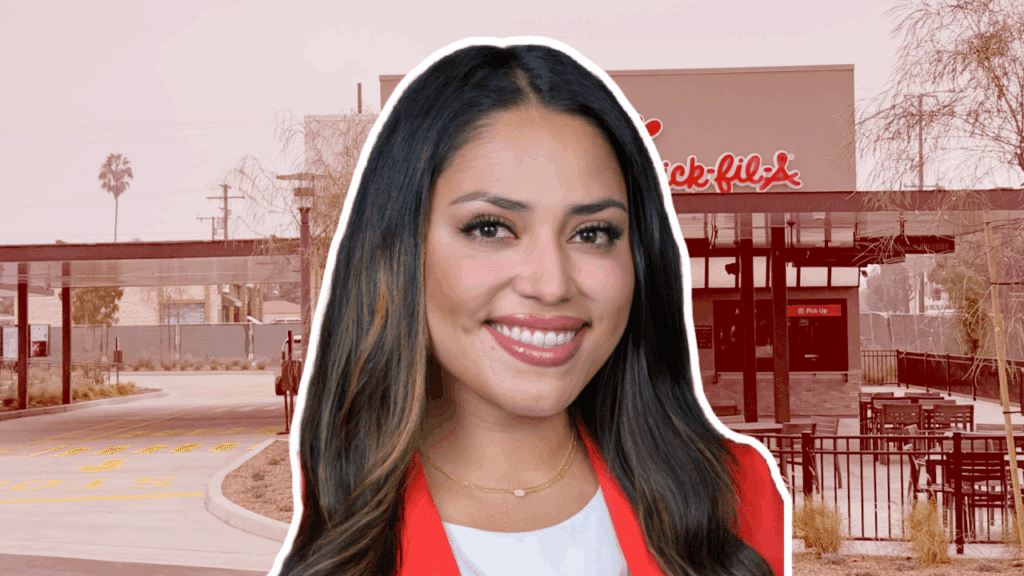Amanda Fernandez’s Vision for Latino Educational Equity: ‘We Are Breaking Down Barriers’
In our community, education has always been a priority. After all the sacrifices our parents have made to ensure a better future for us, education is non-negotiable. It has guaranteed that our lives are a thousand times better than theirs.
But why is education so important to the Latino community? Moreover, how has our relationship with education changed in recent decades?
FIERCE had the honor of speaking with Amanda Fernandez, CEO and Founder of Latinos for Education, and getting all the answers.
If you didn’t know, Latinos for Education is the first national organization focused on and led by Latinos dedicated to developing Latino leadership in the education sector. Who better to explain the importance of education for Latinos?

Amanda Fernandez’s experience in education is much like that of millions of Latinos in the United States
Amanda Fernandez’s Cuban exiled parents risked their lives to come to the United States. From an early age, they let Amanda and her siblings know this was the way to the “American Dream.”
However, as Amanda grew up, she realized not only the power of education to provide opportunity but also the inequality in access to equitable education, especially in immigrant communities.
A few years later, in the corporate world, she realized that disparities persisted at all levels. They just manifested differently. There was a shortage of Latino representation and opportunities for growth.
It was mid-career that she decided to take her talents to the nonprofit sector and focused on educational equity
Amanda Fernandez knew that if Latino children were not getting the proper education, the country would be missing out on critical assets for a strong workforce and for increasing the social mobility of Americans.
“Great teachers and administrators are critical to the success of Latino students,” Amanda told FIERCE. “When I founded Latinos in Education in 2017, it was because I knew that our children need to see mirrors—a reflection of themselves in the classroom—and windows—a bright outlook on their future.”
For the CEO of Latinos for Education, representation is critical for students and their families.
“We are woefully behind in the number of Latino educators and administrators who share the backgrounds and experiences of our students,” she explained. “In addition, our Latino educators deserve access to growth and leadership opportunities. Our students need to see what they can become.”

Latinos are a force to be reckoned with in education
While our population more than quadrupled from 14.6 million in 1980 to 62.1 million in 2021, so did our educational attainment, especially at the secondary level. In 1996, 58.2% of the Hispanic population aged 25-29 graduated from high school; by 2021, the percentage will have risen to 88.5%, according to the U.S. Census Bureau’s Current Population Survey data.
In 2005, one-third of Hispanics aged 25-34 had some college: 2.7 million had less than a high school education; 2.3 million had only a high school degree; 1.6 million had some college; and less than 1 million had a bachelor’s degree or higher.
In 2021, more than half of Hispanic youth had some college degree. The number with less than a bachelor’s degree declined by 45.8% to 1.5 million. There were increases in all other categories: high school only (up 28.3% to 2.9 million), some college (up 76.5% to 2.9 million), and a bachelor’s degree or higher (up 145.2% to 2.2 million).
Latinas, on the other hand, are the top performers
According to a new analysis by the UCLA Latino Policy Institute, the percentage of Latinas with a college degree increased from 5% in 2000 to 20% in 2021, with the highest rates among those of Venezuelan (57%), Argentine (46%) and Chilean (42%) origin.
These figures belie any doubt that women are at the forefront of progress. In fact, according to the new study, the percentage of Latina college graduates is higher than that of Latino men, a trend that is observed across all races and ethnicities.
However, the challenges remain significant
Latinos for Education recently surveyed Latino educators across the country to learn about their current challenges. As CEO Amanda Fernandez explained, the insights they shared “show that Latino children face educational disadvantages early in their educational journey.”
“Latinos currently have lower participation in early childhood education (ECE) programs compared to white or black children,” Amanda explained. “Barriers include lack of information, low investment, and limited ECE options in predominantly Latino neighborhoods.”
Latino students also face barriers to accessing advanced coursework and dual credit opportunities in high school, which affects their college and career readiness. This then contributes to underrepresentation in higher education.

The COVID-19 pandemic also exacerbated this underrepresentation
As Amanda continued, throughout the educational process, the needs of multilingual, primarily Latino students are not being met, hindering future opportunities and success in the job market.
“Finally, research shows that all students benefit from a diverse educator workforce and that students of color thrive when they see themselves reflected in their teachers,” he added. “However, only 9% of educators are Latino, while 28% of K-12 students are Latino, highlighting a significant representation gap. Most Latino children will not experience having a teacher of color, let alone a Latino teacher, in their entire educational experience.”
This is where Latinos for Education comes in
From the beginning, Amanda Fernandez wanted to honor the Latino-ness of our community through cultural values. So Latinos for Education highlights the strengths that Latino leaders bring to the table, with a special emphasis on pride in our experiences and identity.
“Our values continue to resonate with the hundreds of scholars who have participated in our programs,” Amanda explained.
The organization focuses on finding solutions and building bridges between cultures, appreciating the diversity of knowledge, relationships, and ideas.
More than an organization, Latinos for Education is a collective with a shared vision
To date, Latinos for Education has impacted the lives of more than 600 educational leaders and parents through its grants. The organization has a network of more than 4,000 Latino educators and a reach of about 50,000 people through its online and social platforms.
“Our programs help Latinos in education find their voice so they can demand a seat at decision-making tables,” Amanda explained. “We have a fellowship for new educators (Latinx Teachers Fellowship), educators who have been in the industry for several years (Aspiring Latino Leaders Fellowship), and parents who are new to the education system (Familias Latinas Por La Educación). These programs have been life-changing for our alumni community. Our goal is to be the benchmark Latino educational organization in the nation, and these numbers and the impact we have had tell us that we are well on our way.”
Finally, for Amanda Fernandez, the future for Latinos is bright
With so many years in the field and an unwavering vision, Amanda Fernandez has a pretty clear idea of what the future holds for Latinos in education.
“I am incredibly hopeful about the transformative possibilities that our collective efforts will unlock for the Latino community in education,” she said. “By giving Latinos access and opportunity in the education sector, we are breaking down barriers and ensuring that more and more Latino students and families can thrive.”
The Latinos for Education CEO asserts that as education evolves, especially with technology and the rise of AI, “it is critical that we continue to keep equity at the center of our work.”
“We are expanding opportunities that empower individuals and strengthen our communities and society because when Latinos succeed, we all succeed.”




